Grouting
Before applying TilePro EP Grout & Adhesive, make sure that tile is set and that the adhesive has completely dried. Usually, wall joints between the tiles can be grouted after 4-8 hours and floor joints after 24 hours (standard tile adhesives) or 4-6 hours (fast-setting tile adhesives). All joints to receive TilePro EP Grout & Adhesive should be well cleaned, dry, free from loose material, stain, oil or grease, any compounds affecting the bond Remove dust or other contaminants with an air blower. Do not clean tiles with acid cleaners. All loose particles of tile adhesive in the joint must be physically removed to at least 2/3 of the tile thickness. When the tiles are very porous & installed in very hot areas, wet the joints with clean water.
Adhesive
New concrete must be a minimum of 28 days old. The surface to be covered shall be sound, dry, rigid, clean and free from impurities like grout, dirt, debris, oil, grease, curing agents, loose plaster etc
TilePro EP Grout & Adhesive
Two-component, premium quality, solvent- free, coloured, thixotropic, epoxy grout and adhesive for all types of wall and floor tiles, natural stone, glass mosaics and agglomerates
| DATA | RESULT |
| Appearance | Thick paste |
| Mix Density | 1,600 kg/ liter |
| Solid content | 100% |
| Working Time | 60 min @ 20º C35 min @ 30º C15 min @ 40º C |
| Setting time(EN 13454-2:2003) | 70 - 100 mins |
| Open time (EN 1346) | ≥ 20 minutes |
| Adjustability Time | approx. 45 mins |
| Grouting after installation§ on walls bonded with normal setting adhesive:§ on walls bonded with fast setting adhesive:§ on walls laid with mortar:§ on floors bonded with normal setting adhesive:§ on floors bonded with fast setting adhesive:§ on floors laid with mortar: | 4-8 hours1-2 hours2-3 days24 hours3-4 hours7-10 days |
| Ready for use after groutingSubject to chemical attackBasins and swimming pools | after 4 daysafter 10 daysafter 10 days |
| Application temperature range | +5º C to +45º C |
| Service Temperature in use | -10º C to +80º C |
| Resistance to solvents, oil & alkalis | Excellent |
| Resistance to moisture | Excellent |
| Resistance to ageing | Excellent |
| Slip resistance(BS EN 12004-2:2017) | Nil |
| Sheer Strength(BS EN 12004-2:2017) | > 1.5 N/mm² |
| Flash Point | Not flammable |
| VOC content | <35 g/ liter |
Test according to EN 13888/ ISO 13007:
| DATA | STANDARD REQUIREMENT R2T | RESULT |
| Flexural strength @ 28 days§ freeze-thaw cycles§ after dry storage | EN 12808-3≥ 3.5 N/mm² | Complies> 4 N/mm² |
| Compressive strength @ 7 days§ freeze-thaw cycles§ after dry storage | EN 12808-3≥ 15 N/mm² | Complies> 25 N/mm² |
| Tensile adhesion strength@ 28 days | EN 12004-2≥ 1 N/mm² | Complies1.26 N/mm² |
| Abrasion resistance @ 28 days | EN12808-2≤ 2000 mm³ | Complies184 mm³ |
| Linear Shrinkage @ 28 days | EN 12808-4≤ 2 mm/m | None(0 ± 0.02) |
| Water absorption@ 30 minutes@ 240 minutes | EN 12808-5≤ 5 g≤ 10 g | Complies0.760.78 |
Test according to ANSI 118.3:
| DATA | STANDARD REQUIREMENT | RESULT |
| Tensile strength | 500 psi. min. | Complies |
| Compressive Strength @ 28 days | 3000 psi. min | Complies |
| Flexural strength @ 28 days | 1000 psi. min | Complies |
Description
TilePro EP Grout and Adhesive is a two-component, high build, solvent free, thixotropic epoxy resin-based, high strength adhesive mortar for permanent bedding of all types of tiles, natural stones and agglomerates, specifically developed for areas, where a high degree of chemical & mechanical resistance, medium to heavy duty trafficability is required in hygienic and corrosive environments.
TilePro EP Grout & Adhesive is workable and easy to apply, for joint width from 2 to 10mm, produces smooth joint surfaces low in pores and easy to clean (water cleanable properties). It is used for rigid, waterproof and chemical resistant sealing of joints in ceramic wall and floor coverings, which are subjected to chemical and mechanical attack
Additional Information
| Applicable Standards/ Compliance: | Packaging: | Colours: | Coverage/ Yield: | ||||
| Meets the classification requirements of§ American ANSI A118.3§ ISO 13007 & BS EN 12004, classified as RG – resin grout§ ISO 13007 & BS EN 12004, classified as R2T - improved (2) slip-resistant (T) resin based (R) adhesive | 5 kg & 10 kg unit. | 18 standard colors | Yield:
|
Typical Applications
- For Indoor and Outdoor use
- For Walls, Floors and Ceilings
- For areas where medium to heavy duty trafficability is required in hygienic and corrosive environments.
- Wherever a high degree of chemical resistance and high mechanical properties are required.
- For rapid setting, chemical-resistant and water impermeable laying and grouting of wall and floor coverings made of ceramic tiles, mosaic as well as bricks on renders, cement screeds, concrete and timber chipboards.
- For creating floors, walls and worktops, etc. in compliance to HACCP system and the requirements of EC regulations on the hygiene of foodstuffs
- For laying and grouting of tiles in swimming pools (concrete and GRP), fountains, stone features, baths in hospitals, public areas, etc.
- For repair of damaged tile joints.
- For tiling on special substrates such as metal, marble doorsteps, etc.
- Particularly useful in fixing tiles in swimming pools (concrete and GRP), fountains, stone features, hot springs, wet areas, baths in hospitals, public or wellness areas, etc.
- For applications in food and soft drinks industry (production, dairies, bakeries, fruit canning, meat & fish processing, breweries, fat processing industries, canteen kitchens, etc.) paper mills, laboratories and hospitals, hotels and schools, toilet facilities.
- For applications in Industrial floors and walls (car showrooms, battery rooms, galvanization, electrical substations and plants rooms, purification plants, dye works, bleaching works, tanneries, butcheries, slaughter-houses, administration buildings, sewage plants, sewers, cattle stabling and for stairs exposed to de-icing salt)
Benefits
- Low shrinkage, uniform grouts, without cracks
- Waterproof, Stain resistance, Non-absorbent
- Anti-bacterial (ideal for kitchens and swimming pools)
- High strength and very good abrasion resistance
- Solvent-free, Odorless and water cleanable
- Non-sag, non-slip and easy to finish
- Good heat ageing resistance
- Workable and easy to apply
- Very Low VOC emission
- Good extended open and adjustability time
- Resistant to common cleaning and chemicals, a variety of acids, grease & oils.
- Good compressive, flexural strength, good resistance to freeze/thaw cycles and therefore good durability
- Superior finish and large pallet of brilliant colours
- Water impermeable and water vapour barrier protects moisture-sensitive substrates from water and moisture
- High wear resistance, resistant to rolling and grinding loads, insensitive to cleaning by steam jet
- Crack-free curing and setting without shrinking, very high adhesion to joint sides
- Resistant to frost and weathering
- High mechanical strength, good adhesion to joint sides, low modulus of elasticity, therefore superior to cement-based joint grouts
- Low VOC emission
Thoroughly mix the base ‘Part A’ prior to adding the hardener ‘Part B’ using a slow speed drill (350 rpm) fitted with an suitable mixer Paddle. After mixing the ‘Part A’ base, add all the hardener ‘Part B’ and mix for a further 3 minutes or until both components have fully dispersed and are uniform in color. Be sure to rotate the mixer throughout the drum. The ratio between the two components is compulsory, and any modification may cause the product to harden incorrectly
Grouting
Fill the joints completely with adequate rubber grout rubber float, squeegee or a rubber sided or a plastic trowel, spread the mix to substrate evenly and in sufficient quantity. Best result can be obtained by filling the joints with grout and flushing the surface of the tile using a hard rubber float, working diagonally across the joints to both fill and compact the joints. All excess grout should be removed with same rubber float, while still fresh.
Adhesive
Spread the mixed product onto the substrate using a suitable notched trowel between 2 to 5mm by trowel to either the tile or the substrate faces or a single face as per the work method employed. Work into the substrate to ensure complete wetting out of the surface
Cleaning of Joint surfaces:
After grouting, floors and walls should be cleaned immediately before the product dries. Remove surplus with a damp sponge moving diagonally to prevent removal of grout within the joints. Wet the surface thoroughly and emulsify with an abrasive pad for cleaning joints (such as Scotch-Brite), making sure not to wash-out the joints. Rinse the sponge frequently with clean water using two separate buckets of water: one to clean the sponge and second to remove the grouts residue. When dry, clean the tiles with a clean, dry cloth. When finishing large surface floor areas, use a rotary disc-type power float with Scotch-Brite abrasive pads, well saturated with water
Curing/ Ready for Use:
Allow the grout to dry (10 or 15 minutes depending on the weather condition) before starting the cleaning process, remove surplus with a damp sponge moving diagonally to prevent removal of grout within the joints. Rinse the sponge frequently with clean water using two separate buckets of water: one to clean the sponge and second to remove the grouts residue. Avoid excess of water while cleaning to prevent discoloration of joints. When dry, clean the tiles with a clean, dry cloth. Do not spray water under high pressure and avoid using any chemical cleaning agent on the grout until 3 days after the application.
Expansion and Movement joints:
Expansion joints and movement joints in floors and walls should never be filled with TilePro EP Grout & Adhesive. Seal joints between tiles, fitted elements, corner joints (floor/wall) and connection joints (fixtures/tiles, wood/tiles) pipe culverts with the appropriate elastic joint sealant
Cleaning:
Tools, equipment and mixers with clean water immediately after use (before hardening). Cured material can only be removed by mechanical means. Similarly, joints must be raked out in readiness for grouting







































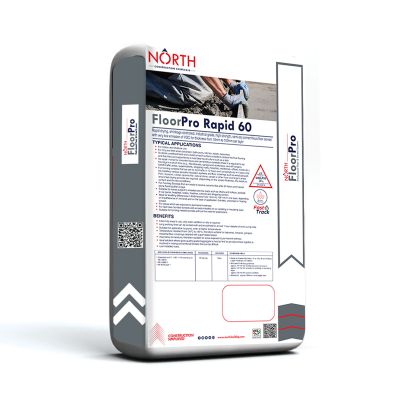

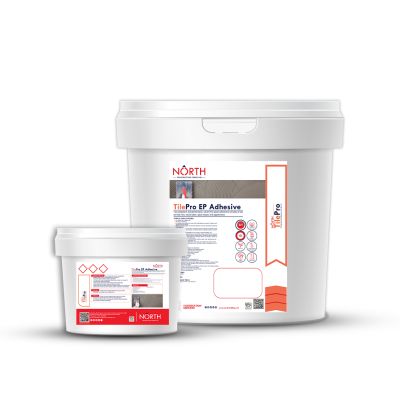

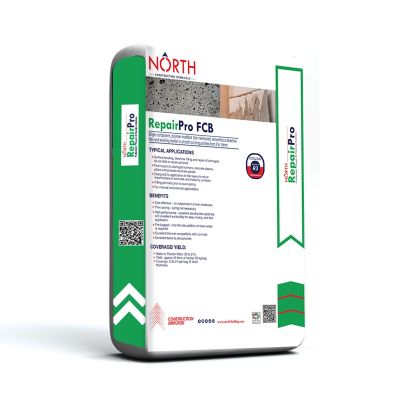

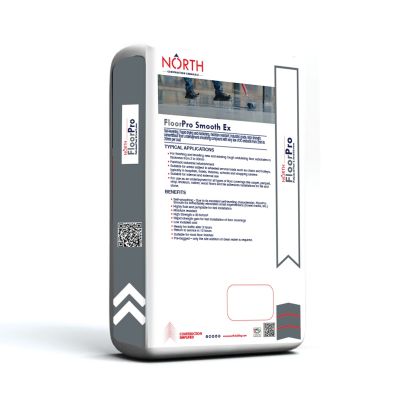
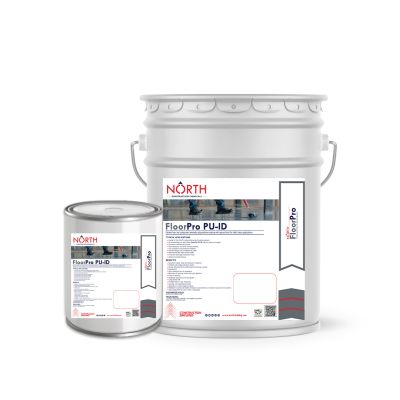



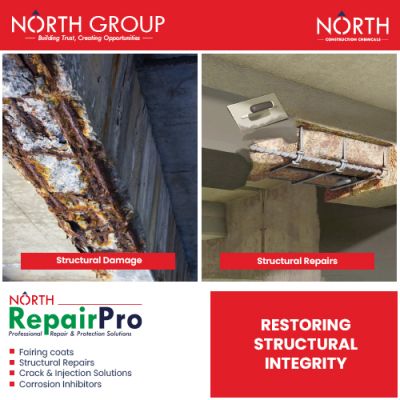


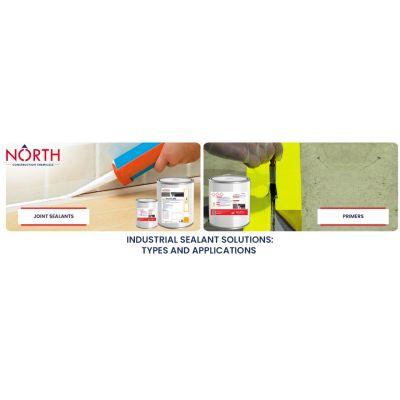
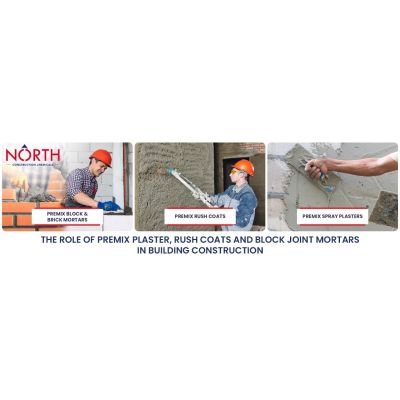
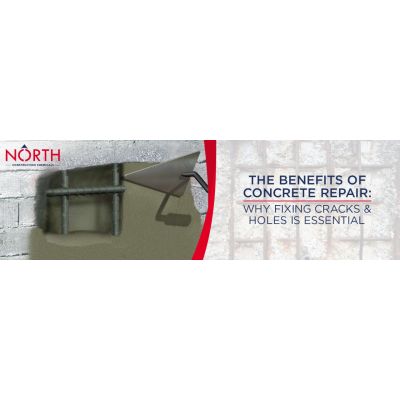
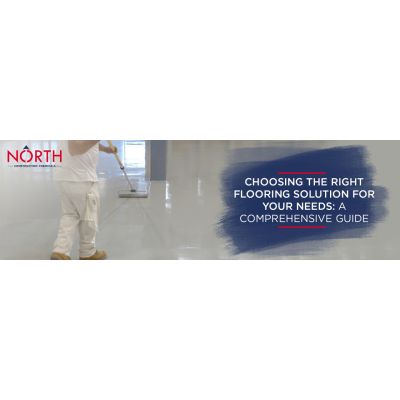




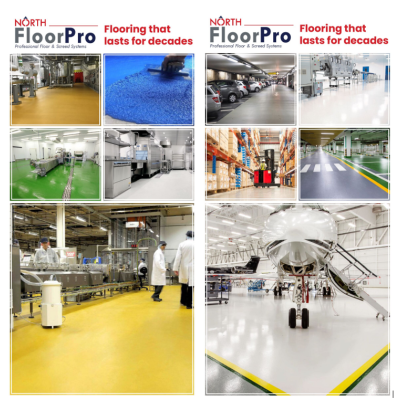
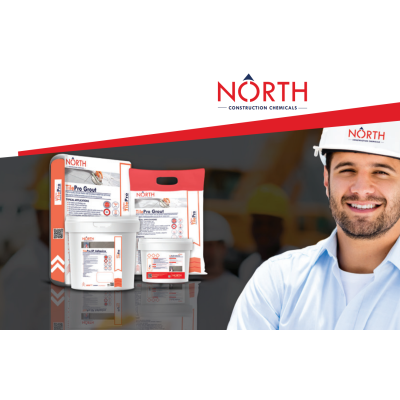
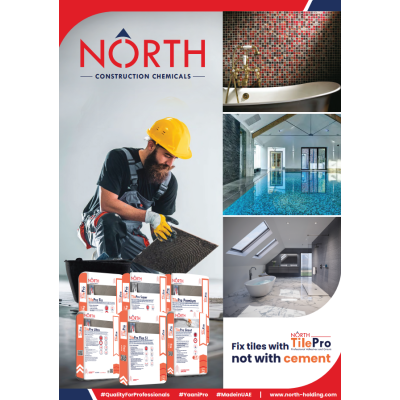

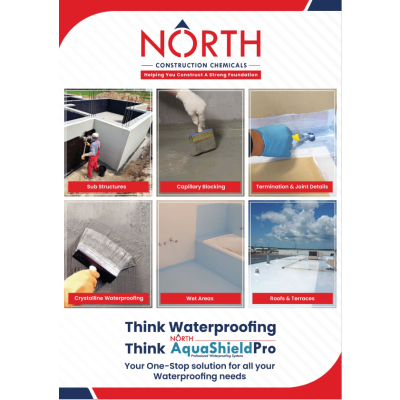
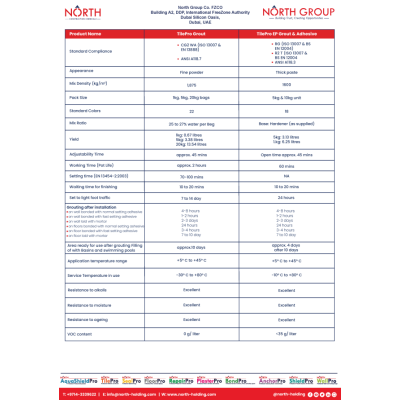

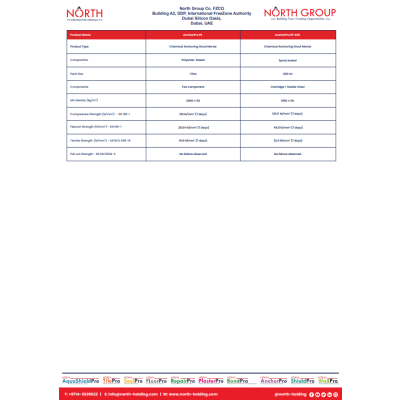
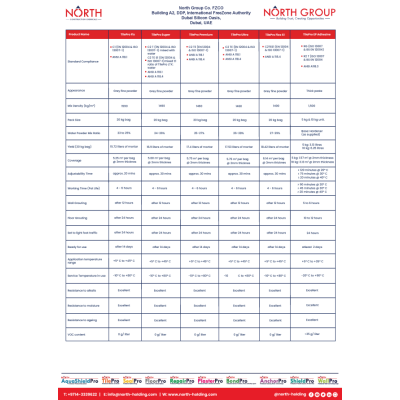
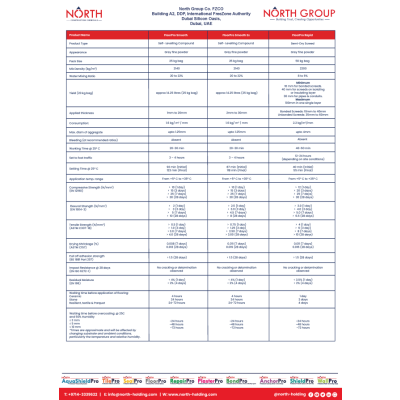
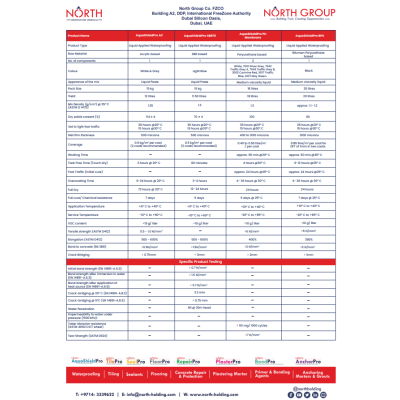


 Where To Buy
Where To Buy